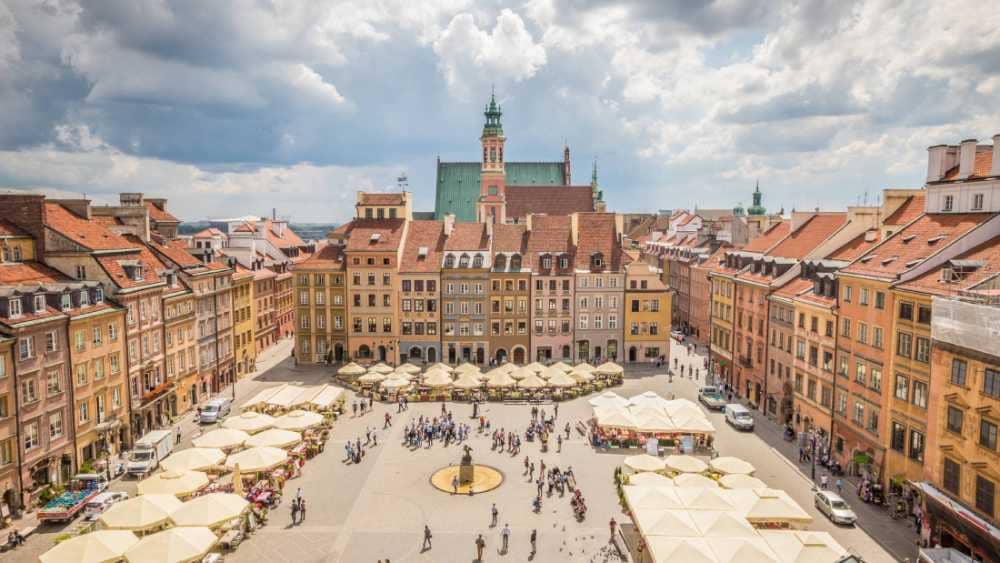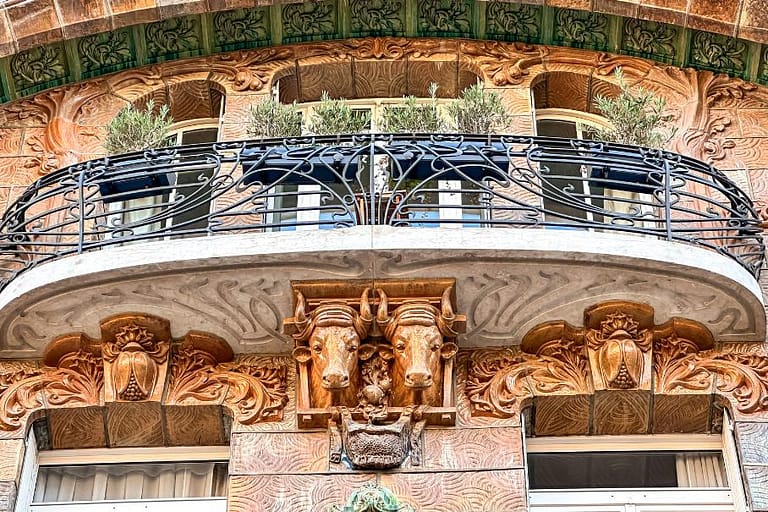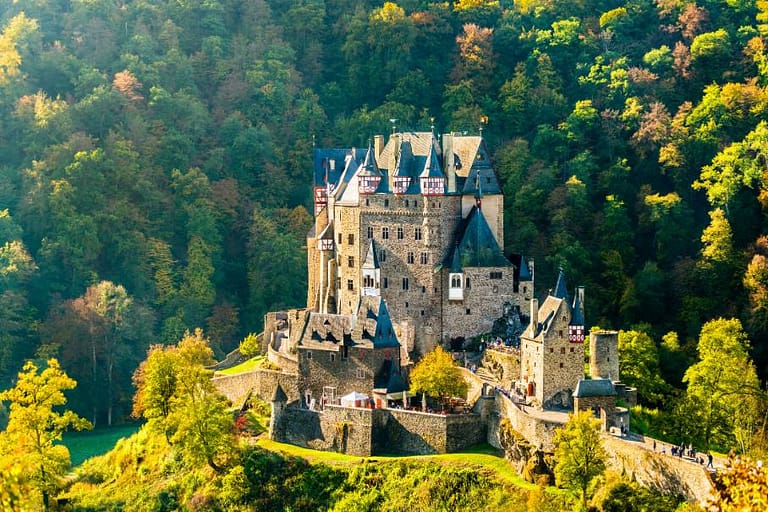Opinion: Why Warsaw is the best city in Poland to visit
I will always argue that Warsaw is the best city in Poland. And it’s not just because I was born there. Many people will tell you that there are better cities in Poland to visit and you shouldn’t spend a lot of time in Warsaw. That’s because they don’t fully understand Warsaw’s history and the effort it took to rebuilt it. For me, to understand Warsaw is to love it. Those that dismiss it as a large city with unremarkable architecture and lack of charm miss out on a truly spectacular story.
I’ve read a few blogs on Warsaw, and most seemed pretty superficial, focusing on the food, things to do and a brief mention of its war-related past. While you can’t dismiss the historical importance of what happened during the war, Warsaw deserves more of a story. I haven’t written about Warsaw and Poland before as it’s been a long time since I’ve been there, until now. However, I wanted to provide a narrative that I think is missing in the many travel blogs I’ve read.
Affiliate Disclosure – This post contains affiliate links. If you make a purchase through these links, I may earn a commission. This doesn’t affect your purchases or any fees you may pay for the product or service. Read more in my DISCLAIMER.
Memories of Warsaw
I was born in Warsaw, in what seems to be a different lifetime. My time there was short but, from what I recall, a good one. I left as a child when my parents decided to move to Toronto, Canada. For various reasons, my last visit to Poland was in 2001, and I haven’t set foot in the country since. So now, I came to Warsaw 18 years later on my way home from Riga, Latvia.
Returning to Warsaw after so many years was an interesting experience. The memories, or rather flashes of past events, rushed inside my head. They were more like bits of a movie I must have seen before rather than actual events. Some of it made me sad while curious at the same time.
The city has changed quite a bit since then.

I travelled with my friend Kathryn, who has never been to Poland before. During our short time, I wanted to show her some of Warsaw’s essences and the city where my family comes from. Not an easy feat in a short time, but definitely an introduction.
Enjoying this post? You might like to read Fun facts about Poland!
Warsaw Castle and the Old Town
While on the surface, this might seem like the most touristy thing to do in a European city, this is a great place to start your understanding of Warsaw. The Old Town you see today is actually not that old. In fact, pretty much what you see today has been rebuilt.



Warsaw didn’t become Poland’s capital until 1596 when King Sigismund III Vasa relocated his court from Krakow. You might think that after five centuries, there should be a lot of old stuff here. In theory, you would be right. In practice, nothing can be further from the truth. Before WWII, Warsaw was one of the most beautiful cities in Europe. Dubbed as the “Paris of the North” by its contemporaries. As the capital and royal residence, it reflected the splendour of the time. That all changed with the outbreak of WWII.
I recommend you visit the castle first. Be sure to check out the video room by the cloakroom downstairs. There you will see the story of the castle. How it looked and the people who built it. There is also another video on how it was all destroyed. The Nazis had a clear vision of a new Germanized city in the ashes of Warsaw. Hitler ordered the city to be grazed to the ground and by the end of the war, it was.
I think you really need the visuals to fully understand what that looked like. After the severe damage post-war, many wanted to move the capital to a different city, leaving the ruins and rubble behind. The castle was destroyed and had resembled a vacant lot once the rubble was cleared.





Planning a trip to Poland? You might enjoy reading Castles in Poland!
The phoenix rising out of the ashes
Many people compare Warsaw’s comeback story to a phoenix rising out of the ashes. A city of a million people before the war, it became a pile of rubble, dust and ash at the end of the war. Only a small amount of people remained living in ruins. By 1945, the destruction of Warsaw was estimated at 85%-90%.



The castle tour will give you a good idea of what Warsaw looked like at the end of the war. It will also show you the restoration process of the castle and the Old Town. Plans and old paintings by Italian painter Bernardo Bellotto, known as Canaletto, helped guide the restoration process. Through the people’s Herculean efforts, many of the items in the castle avoided destruction and are once again on display. So are Canaletto’s paintings.
It took a tremendous amount of effort, resources and dedication to restore Warsaw. As people started returning to the city, everyone was part of the restoration. For various reasons, the castle itself had to wait for a few decades to return to its former glory. It officially opened to the public in 1984.
The war left Warsaw in a pile of rubble. The subsequent Soviet control ensured further demolition of stunning buildings and replacement with architecture favouring the communist propaganda.
Those who stroll through the Old Town, take a pic of the castle and move on are not fully understanding what happened here. Make sure you visit the castle and then tour the Old Town. You’ll find it fascinating.
Warsaw and the war
It’s impossible to talk about Warsaw without talking about the war. There are numerous museums that can provide you with very detailed info about the atrocities. However, you don’t have to visit a museum to learn about the war.
Throughout the city you will find numerous monuments, most having something to do with the war. These monuments commemorate people and events of the past. Some are simple plaques, while others are elaborately crafted and hard to miss. Many plaques are dedicated to people who died in that spot, often executed by the Nazis or from a bomb explosion. Each one tells you how many people lost their lives and on what day. Quite often you’ll find flowers and candles there too. It’s like a living cemetery all around you.

So, what makes Warsaw’s war experience different from other Polish cities? Well, we already know that Hitler had special plans for the city and was determined to erase it, pretty much succeeding. But it was the Warsaw Uprising in August 1944, that really ensured the city’s destruction.

Warsaw had a powerful and determined resistance movement. Against all odds, the Warsaw Uprising was an attempt to take back the city. Lasting over a month, the Nazis ultimately crushed it, even more, determined to destroy the city as punishment. Warsaw paid dearly for its insubordination.
Unescapable morbidness
It’s difficult to explain to people why I will never visit a concentration camp or why I don’t watch war movies. For me, the atrocities and destruction of the war are not a distant history lesson. My grandma’s stories of the Nazis marching on the streets when she was a little girl, and all the people she knew that were never seen again always come to mind. Stories of war survivors coming to my school and recalling their experiences. Tales of my grandfather being imprisoned as a POW in the concentration camp. The realities of war were always fresh.
As a child growing up in Warsaw, I was always exposed to what happened. I think some of that stuff has seriously traumatized me, but that’s not what this post is about. Needless to say, there is an element of morbidness everywhere in Warsaw.

One of the most moving monuments is a statue of a child soldier outside the Old Town gates. It’s dedicated to the boy and girl scouts who supported the war efforts. They weren’t selling cookies or earning badges. These kids and youth were scouts, messengers and threw Molotov cocktails at the enemy. Many died for their efforts.
Kat and I stopped here at the same time as a group of tourists approached. They stopped, took pics and left. I’m pretty sure not fully understand what the monument is about. Kat, on the other hand, was pretty affected. I think that was more because she has young kids and the idea of them fighting in a war was pretty upsetting, rather than my explanation. But you get the point.
Warsaw today
I don’t want you to think that Warsaw is all doom and gloom. If anything, today, it’s a vibrant city. It’s full of restaurants, bars, parks, museums and, surprisingly, architecture. The restoration of Warsaw is an ongoing process, and you will find quite a few beautiful buildings that provide a glimpse of what it once was.
While Warsaw is not as “pretty” as other European cities, it’s a place that keeps evolving. Buildings are restored, new ones are going up every day, and the past is kept alive. Many great spots honour Warsaw’s royal past, which is definitely worth checking out.



Warsaw is also a place of culture and innovation. I remember going to the theatre when I was a kid, and one day I would like to go back and check out a play or an opera. I would also love to go back for a more in-depth architectural exploration.
What the future holds
Most of all, I would like to go back to Warsaw without the baggage of the past. In a way, this post has been very cathartic in letting go of the darkness. I needed to go back as an adult to fully embrace Warsaw’s history and, through that, my family’s.
Although I’ve lived most of my life in Toronto, Warsaw, is where I came from. Where my family is from. Because of that, it will always be the best city in Poland for me. While not everyone will agree, I hope this gives you an insight into what makes Warsaw unlike other cities in Poland.


At least, I hope that you have a different perspective of what is there to see. The determination and sheer stubbornness of the people are the reason Warsaw exists today. It may be a simpler and less attractive version of what once was, but there is still room for recreating its greatness. Who knows, maybe one day they will bring back the glamour and beauty of the past.
Internal struggle
So, you might wonder why it took me so long to go back.
There are many things about Poland, including its politics, that I can’t entirely agree with. For a country that has fought so much against invasion, occupation and oppression, I’m surprised to see Poland going on a far-right, nationalist path. I’m especially concerned by the restrictive abortion laws and anti-immigrant rhetoric.
Poland has been a tolerant country for centuries, which is probably why it had such a high Jewish population before the war. I have a hard time reconciling everything my ancestors fought for with the current climate.





I realize that not every country is perfect. There are many issues that even Canada faces criticism over. Does it mean people shouldn’t go there? I don’t have an answer to that. All I know is that Canada is my home. I have seen a lot of it, learned about it and am actively involved in what happens here.
But a part of me wants to learn and explore more of the country I came from. It’s a hard decision, but I will go back to Poland. So, there will be more posts coming your way next year.
Food for thought
In my search for Warsaw’s lost architecture, I came across two things that intrigued me. If you’re like me, you might find this fascinating.
The first is a video that deals with Warsaw’s post-war reconstruction. While it’s in Polish, you can skip to the parts where they show the old pre-war buildings and how some of them looked after the war. The video’s gist is that quite a few of these magnificent buildings could have been salvaged but were destroyed in the name of communist propaganda. Stalin, much like Hitler, had his own vision of what Warsaw should look like. Watching this video truly made me sad.
The second thing I found is a project that aims to recreate the lost buildings and display them as miniatures. I am definitely going to check it out on my next visit. The project isn’t finished, but it should still be an impressive exhibition.









